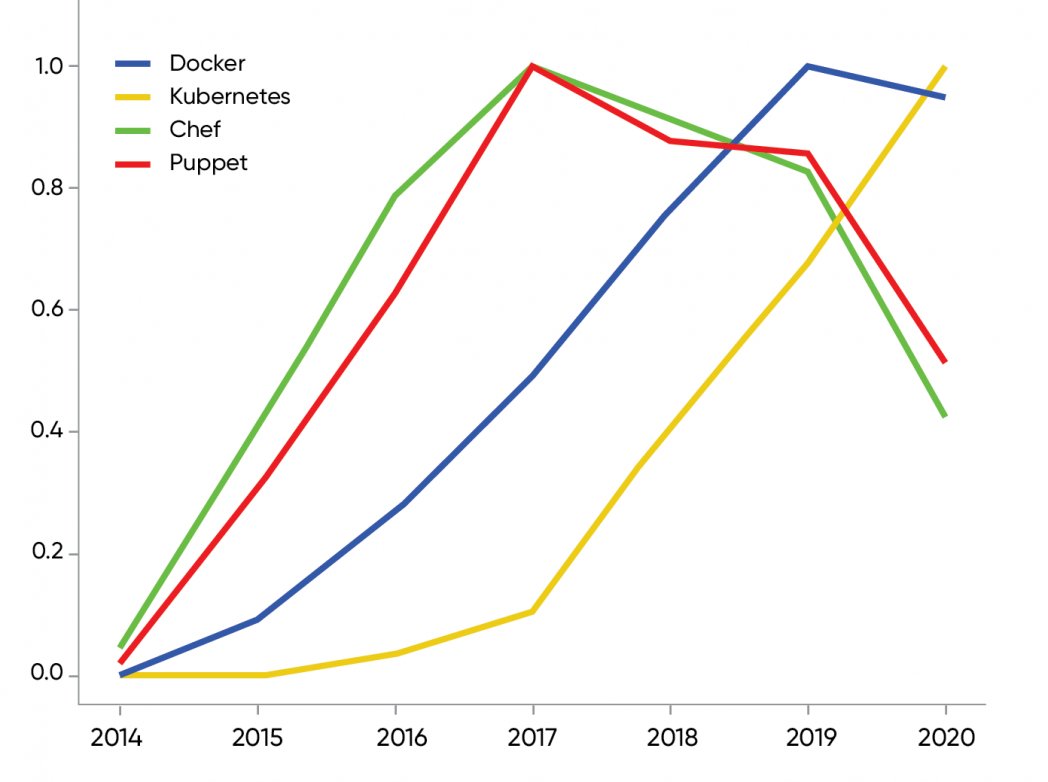
Where Programming, Ops, AI, and the Cloud are Headed in 2021
Following O'Reilly online learning trends to see what's coming next. oreilly.com/radar/where-pr…
Below will share some quotes around #DevOps and #Cloud topics from that report. Thread.
Following O'Reilly online learning trends to see what's coming next. oreilly.com/radar/where-pr…
Below will share some quotes around #DevOps and #Cloud topics from that report. Thread.
The most successful superstream series focused on software architecture and infrastructure and operations. Why? The in-person O’Reilly Software Architecture Conference was small but growing. But when the pandemic hit, companies found out that they really were online businesses.
And if they weren’t, they had to become online to survive. Even small restaurants and farm markets were adding online ordering features to their websites. Suddenly, the ability to design, build, and operate applications at scale wasn’t optional; it was necessary for survival.
Even if those machines are all in Amazon’s giant data centers and managed in bulk using highly automated tools, operations staff still need to keep systems running smoothly, monitoring, troubleshooting, and ensuring that you’re not paying for resources you don’t need.
Serverless and other cloud technologies allow the same operations team to manage much larger infrastructures; they don’t make operations go away. #devops #sre #could
The term “DevOps” has fallen on hard times. Usage of DevOps-titled content in O’Reilly online learning has dropped by 17% in the past year, while SRE (including “site reliability engineering”) has climbed by 37%, and the term “operations” is up 25%.
While SRE and DevOps are distinct concepts, for many customers SRE is DevOps at Google scale–and who doesn’t want that kind of growth? Both SRE and DevOps emphasize similar practices
Docker is close to flat (5% decline year over year), but usage of content about containers skyrocketed by 99%. So yes, containerization is clearly a big deal. Docker itself may have stalled—we’ll know more next year
—but Kubernetes’s dominance as the tool for container orchestration keeps containers central. Docker was the enabling technology, but Kubernetes made it possible to deploy containers at scale.
Kubernetes isn’t just an orchestration tool; it’s the cloud’s operating system (or, as Kelsey Hightower has said, “Kubernetes will be the Linux of distributed systems”).
Observability saw the greatest growth in the past year (128%), while monitoring is only up 9%. While observability is a richer, more powerful capability than monitoring.
“Observability” risks becoming the new name for monitoring. And that’s unfortunate.
“Observability” risks becoming the new name for monitoring. And that’s unfortunate.
Containerized deployment appears to minimize the problem of reproducible configuration, since a container is a complete software package.
Docker and Kubernetes versus Chef and Puppet normalized adoption curve on the picture:
Docker and Kubernetes versus Chef and Puppet normalized adoption curve on the picture:

The biggest challenge facing operations teams in the coming year, and the biggest challenge facing data engineers, will be learning how to deploy AI systems effectively.
AI breaks assumptions because data is more important than code. We don’t yet have tools for versioning data.
AI breaks assumptions because data is more important than code. We don’t yet have tools for versioning data.
Testing is critical to continuous deployment, but the behavior of AI systems is probabilistic, not deterministic, so it’s harder to say that this test or that test failed. It’s particularly difficult if testing includes issues like fairness and bias.
Operations staff too frequently assume that an AI system is just another application—but they’re wrong. And AI developers too frequently assume that an operations team will be able to deploy their software, and they’ll be able to move on to the next project—but they’re also wrong
Usage of cloud titles that don’t mention a specific vendor (e.g., Amazon Web Services, Microsoft Azure, or Google Cloud) grew at an even faster rate (46%). Our customers don’t see the cloud through the lens of any single platform.
We’re only at the beginning of cloud adoption; while most companies are using cloud services in some form, and many have moved business-critical applications and datasets to the cloud, we have a long way to go. If there’s one technology trend you need to be on top of, this is it.
Any number of people have told us that they stay away from Google because they’re too likely to say, “Oh, that service you rely on? We’re shutting it down; we have a better solution.” Amazon and Microsoft don’t do that
Companies have hybrid clouds long before anyone at the C-level perceives the need for a coherent cloud strategy. By the time the C suite is building a master plan, there are already mission-critical apps in marketing, sales, and product development.
We see a lot of interest in microservices, with a 10% increase—not large, but still healthy. Serverless also 10% up, but with lower usage. That’s important: while it “feels like” serverless adoption has stalled, our data suggests that it’s growing in parallel with microservices.
We’ve talked system administration for decades, the ratio of IT staff to computers managed has gone from many-to-one (one mainframe, many operators) to one-to-thousands (monitoring infra in the cloud). As part of that evolution, automation has gone from an option to a necessity.
• • •
Missing some Tweet in this thread? You can try to
force a refresh


